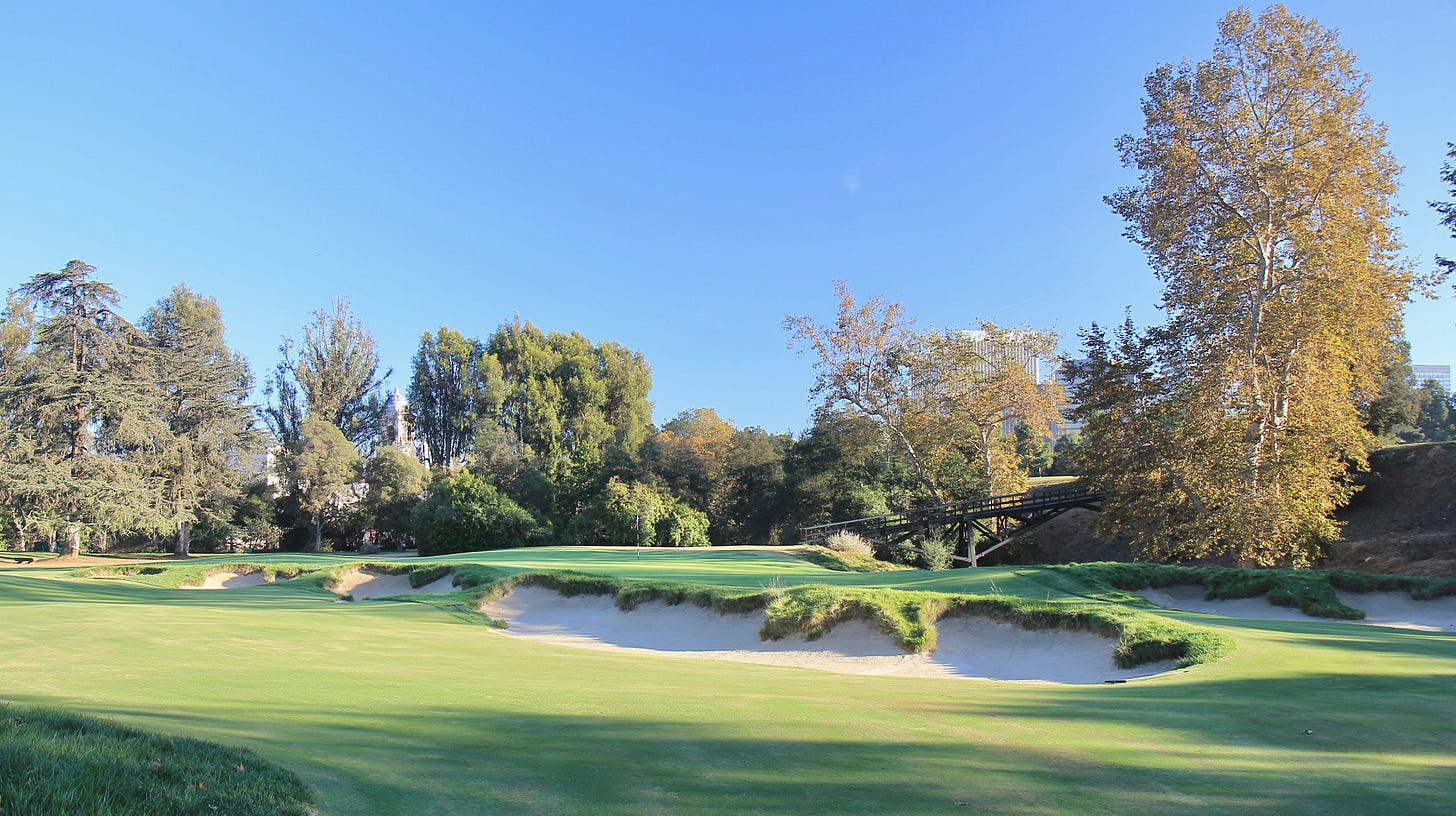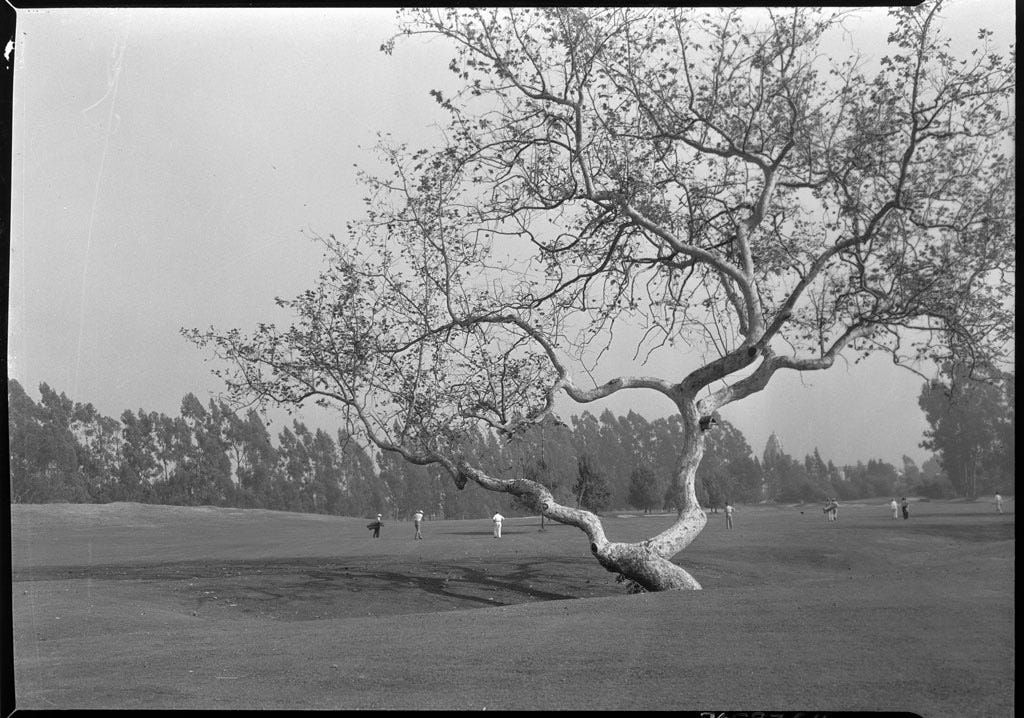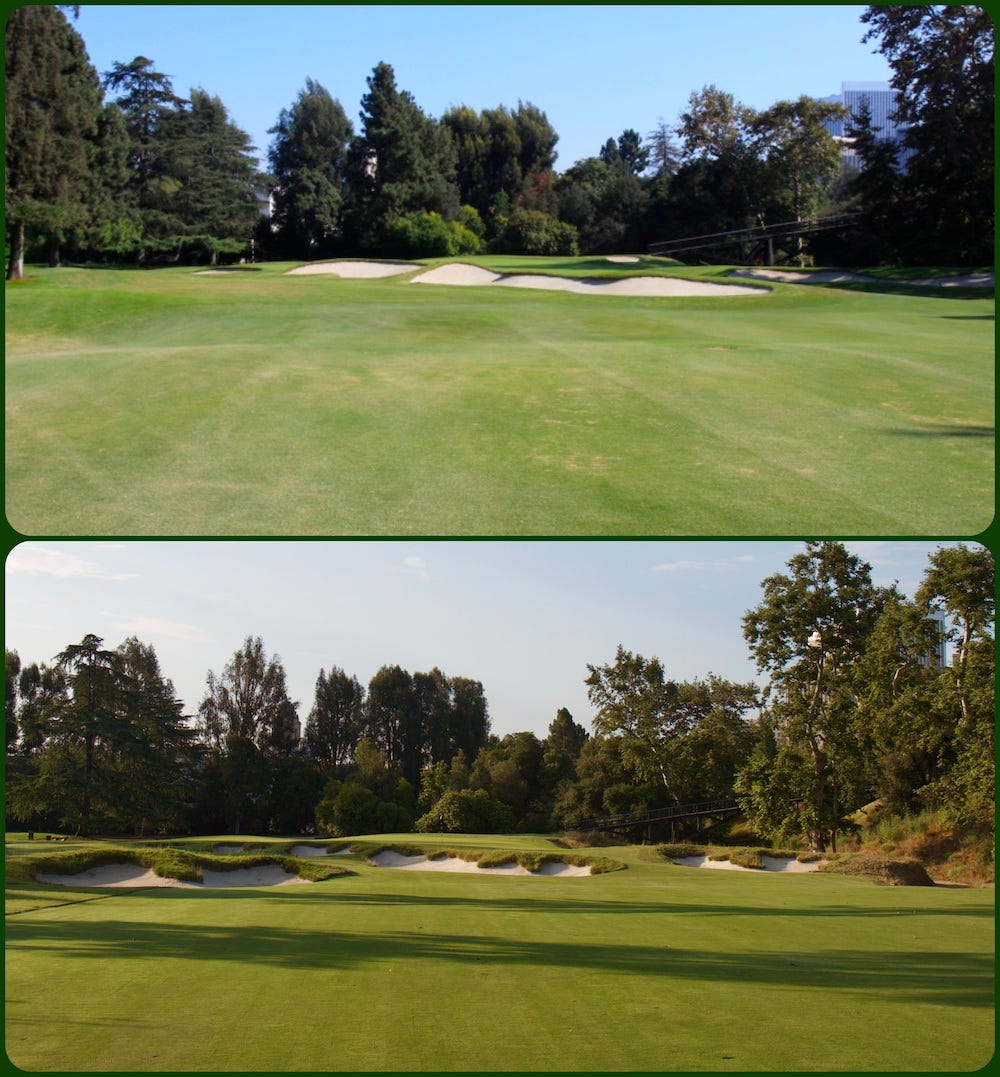The end has arrived via two gigantic, grueling and intriguing par 4s to close out Los Angeles Country Club’s North Course.
How long, tortuous and perplex are these two holes? Think Jimmy Dunne’s wild and wacky Golf Channel appearance, only a lot less disconcerting.
Whew, this U.S. Open can’t come soon enough for some people!
Alright, we have a lot to cover with these two brutes, including the possibility of players playing down fairways not assigned to the holes in question.
How’s that for a tease?
And you know the drill, if you’ve missed earlier editions or you’re a new subscriber…
Let’s go two more times Quadrilateralarchitectistas!
Seventeenth Hole
Par: 4
U.S. Open Yardage: 520 yards
Elevation Change: -43 feet from back tee to front of the green
Even as this par 4 became so overplanted it was practically invisible from the tee, it’s long been held up as of the finest holes in America. And to be clear, I haven’t used the world overplanted up to this point for some of the corridors which we widened out in 2010’s restoration. But ladies and gentlemen of the jury, I’d like to enter into evidence exhibits A and B of trees gone wild. These images were taken by yours truly in May 1995 before the green rebuild that year.
But even playing through a forest for so long, the 17th green always remained too special to be ignored.
Many years later I’d like to believe with several overall improvements made over the last 13 years, No. 17 will end U.S. Open week seen as a classic hole. But, there is a but! Much of the player reception may depend on how the setup and weather impacts the tee shot from a very tough tee.
Setting: Ancient sycamores, oaks and eucalyptus down the right, highlighted by a large syc on the left framing the tee shot.
The restored barranca crosses in front of the tee and runs the length of the hole and features coastal sage, monkey flower (blooming orange), white sage and purple sage.
The hole plays southeast.
The prevailing wind is helpful when quartering from the right.
The hole runs parallel to the par 4 second.
The old par 3 17th green can be seen short right of the current green and was restored as an homage to the once infamous little hole abandoned in 1927-28’s course overhaul. (More on that Monday.)
Concept: A classic downhill par 4 where a drive hugging the right side opens up a better angle.
The original Thomas hole was about 100 yards shorter and rewarded drives curved to the right side opening, leaving a view of the green floor and better angle.
Drives playing safely down the left theoretically have a much worse angle into the green due to its bunkering, angle and depth.
Originally the 2nd and 17th fairways were connected, as seen in this late 1920’s image. This sycamore remains today.











